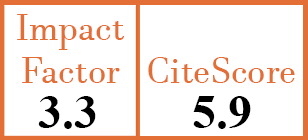Full Papers
Evaluating the metabolic score for insulin resistance in patients with systemic lupus erythematosus
A. Aznar-Esquivel1, M. Hernández-González2, M. García-González3, F. Gómez-Bernal4, J.C. Quevedo-Abeledo5, C. Almeida-Santiago6, A. Molina-Tercero7, E. Heras-Recuero8, A. De vera-González9, A. González-Delgado10, B. Tejera-Segura11, M.Á. González-Gay12, I. Ferraz-Amaro13
- Division of Rheumatology, Hospital Universitario de Canarias, Tenerife, Spain.
- Division of Rheumatology, Hospital Universitario de Canarias, Tenerife, Spain.
- Division of Rheumatology, Hospital Universitario de Canarias, Tenerife, Spain.
- Division of Central Laboratory, Hospital Universitario de Canarias, Tenerife, Spain.
- Division of Rheumatology, Hospital Doctor Negrín, Las Palmas de Gran Canaria, Spain.
- Division of Rheumatology, Hospital Doctor Negrín, Las Palmas de Gran Canaria, Spain.
- Division of Rheumatology, Hospital Doctor Negrín, Las Palmas de Gran Canaria, Spain.
- Division of Rheumatology, IIS-Fundación Jiménez Díaz, Madrid, Spain.
- Division of Central Laboratory, Hospital Universitario de Canarias, Tenerife, Spain.
- Division of Central Laboratory, Hospital Universitario de Canarias, Tenerife, Spain.
- Division of Rheumatology, Hospital Insular, Las Palmas de Gran Canaria, Spain.
- Division of Rheumatology, IIS-Fundación Jiménez Díaz, Madrid; and Medicine and Psychiatry Department, University of Cantabria, Santander, Spain. miguelaggay@hotmail.com
- Division of Rheumatology, Hospital Universitario de Canarias, Tenerife; and Department of Internal Medicine, University of La Laguna, Tenerife, Spain. iferrazamaro@hotmail.com
CER18966
Full Papers
PMID: 41004315 [PubMed]
Received: 29/05/2025
Accepted : 21/08/2025
In Press: 19/09/2025
Abstract
OBJECTIVES:
The Metabolic Score for Insulin Resistance (METS-IR) is a novel, non-insulin-based marker used to assess insulin resistance and cardiovascular risk in healthy individuals. Systemic lupus erythematosus (SLE) is an autoimmune disease associated with an increased risk of cardiovascular disease. This study aimed to calculate METS-IR in a large cohort of patients with SLE and to examine its relationship with disease characteristics and cardiovascular comorbidities.
METHODS:
A total of 308 patients with SLE were recruited. METS-IR was calculated, and the activity (SLEDAI and SLEDAS) and damage index (SDI) scores, full lipid profile, insulin resistance indices through HOMA2 (Homeostasis Model Assessment) calculation and carotid subclinical atherosclerosis were assessed. A multivariable linear regression analysis was conducted to examine the relationship between METS-IR and clinical as well as laboratory disease characteristics, with a particular focus on cardiovascular comorbidities.
RESULTS:
METS-IR was not associated with SLE-related disease duration, activity, or damage. However, C-reactive protein levels, as well as positivity for anticardiolipin IgG and anti-beta2 glycoprotein I IgG antibodies, were independently associated with higher METS-IR values after multivariable analysis. Additionally, after adjusting for covariates, apolipoprotein B and A1 levels, along with the atherogenic index, showed significant positive associations with METS-IR. Furthermore, higher serum insulin and C-peptide levels, as well as HOMA-derived measures of insulin resistance and beta cell function, were positively and significantly correlated with elevated METS-IR.
CONCLUSIONS:
In patients with SLE, METS-IR remains associated with cardiometabolic parameters, including lipid profile and insulin resistance. However, disease-specific factors such as disease activity and accumulated damage show no association with METS-IR.


